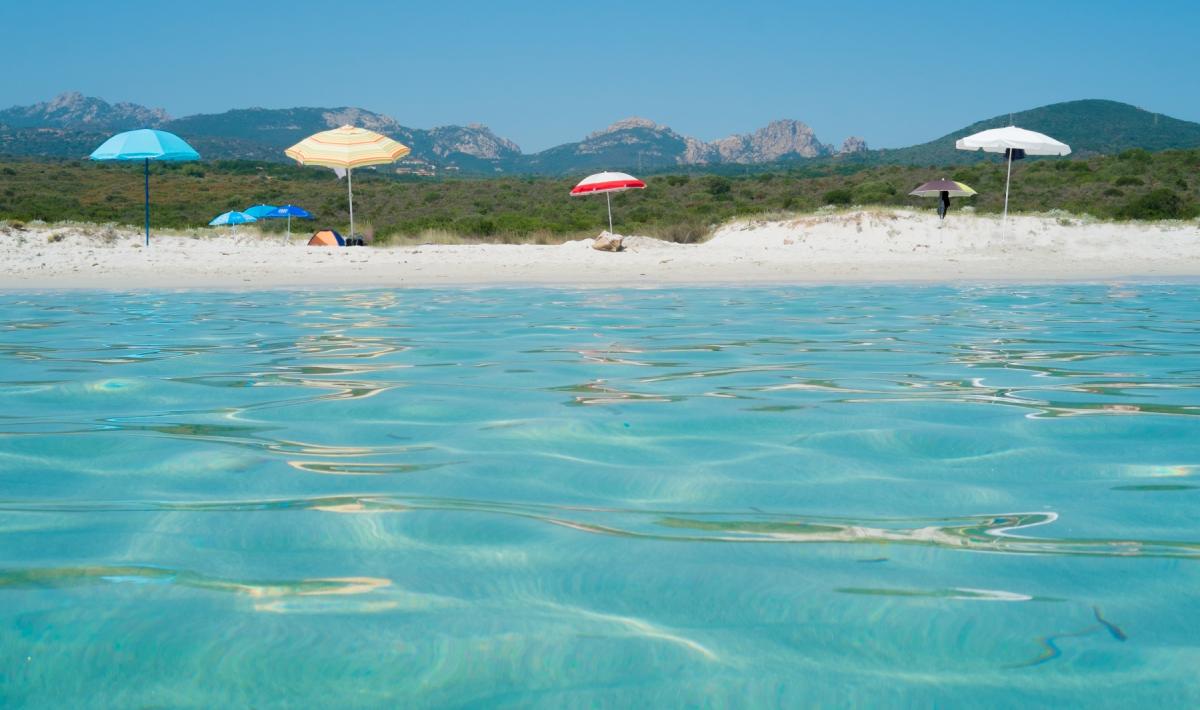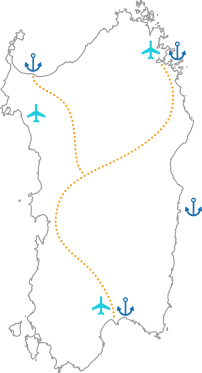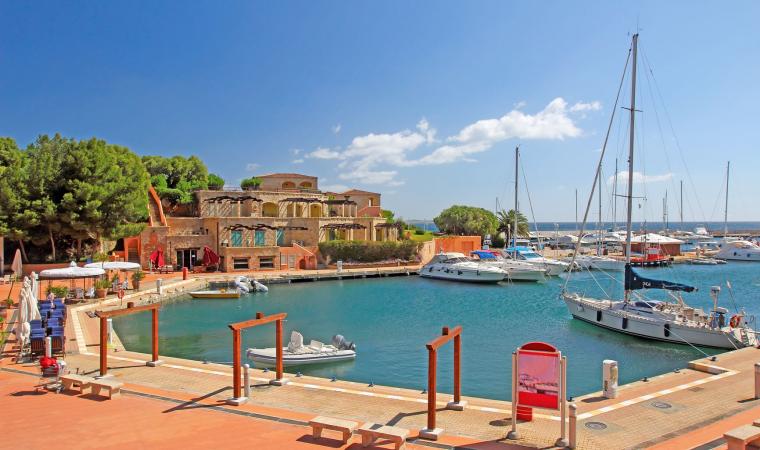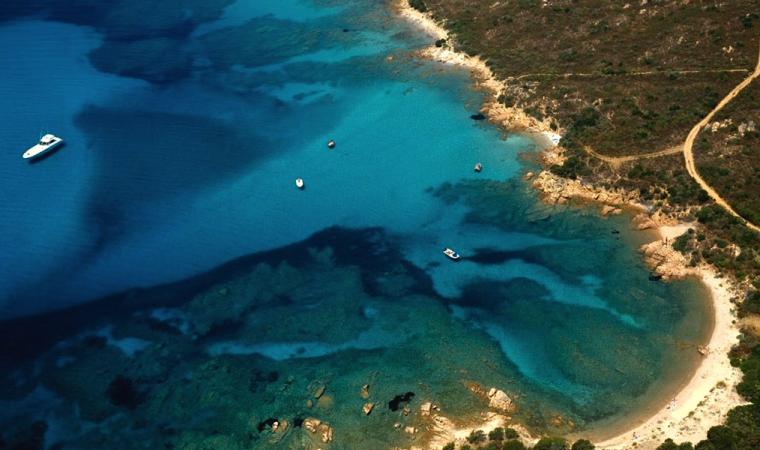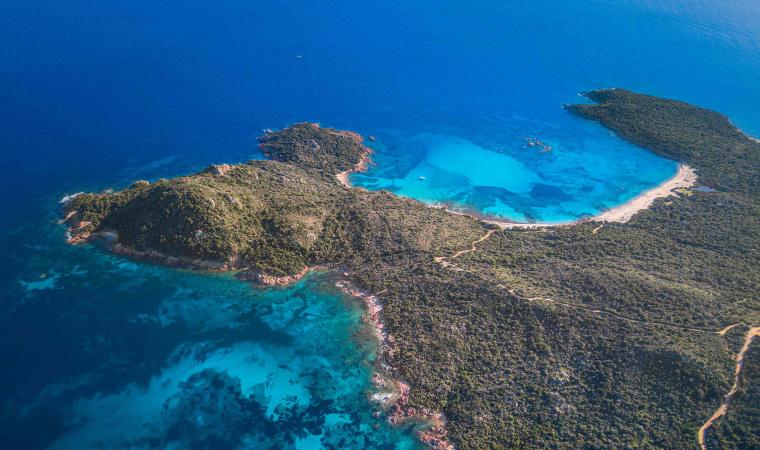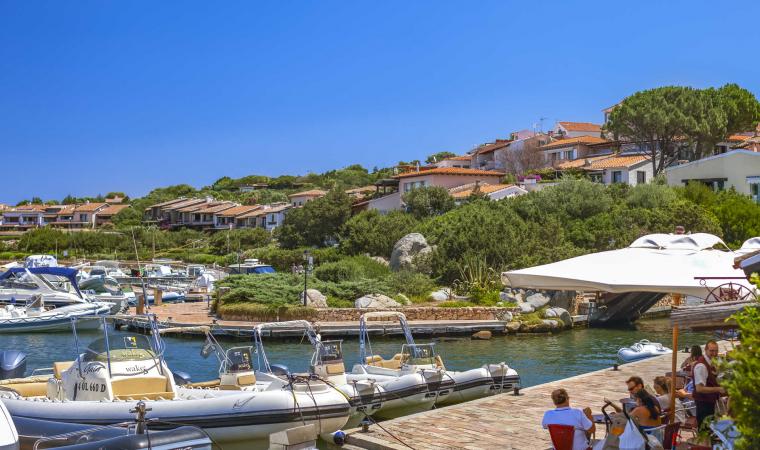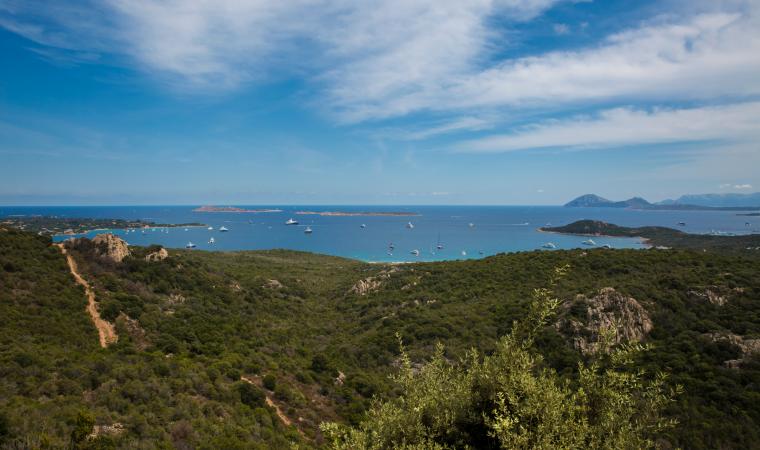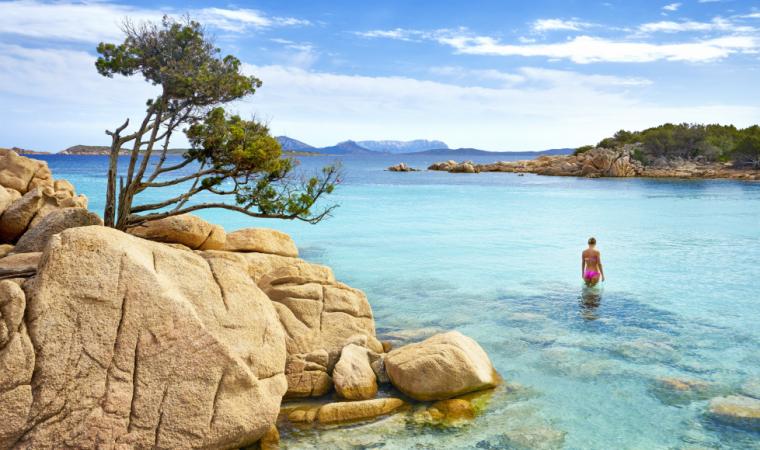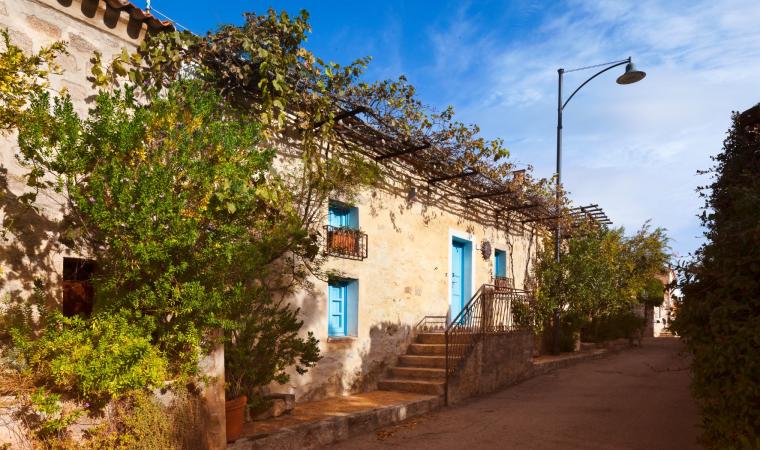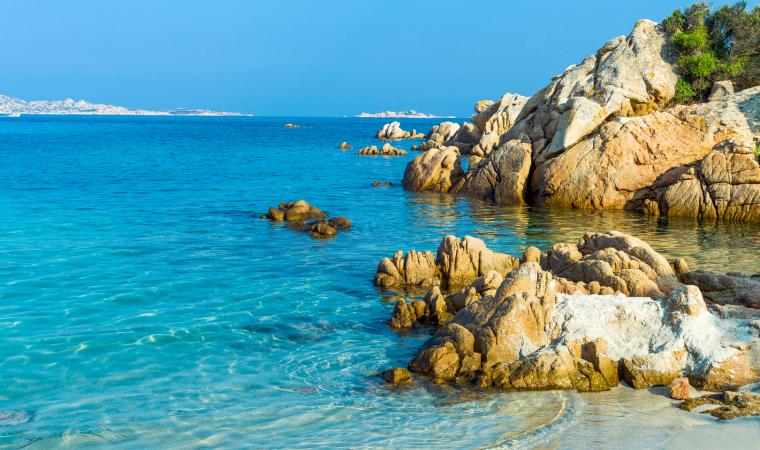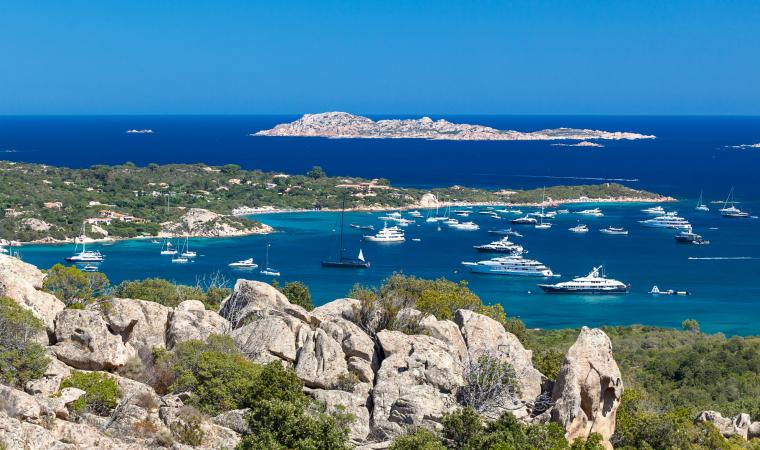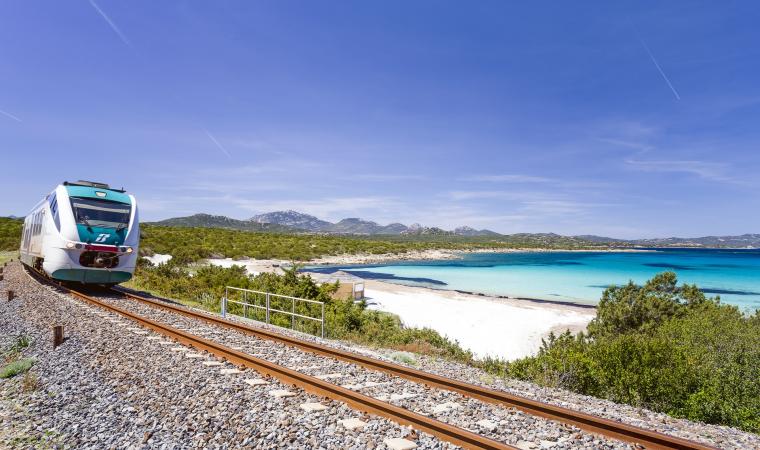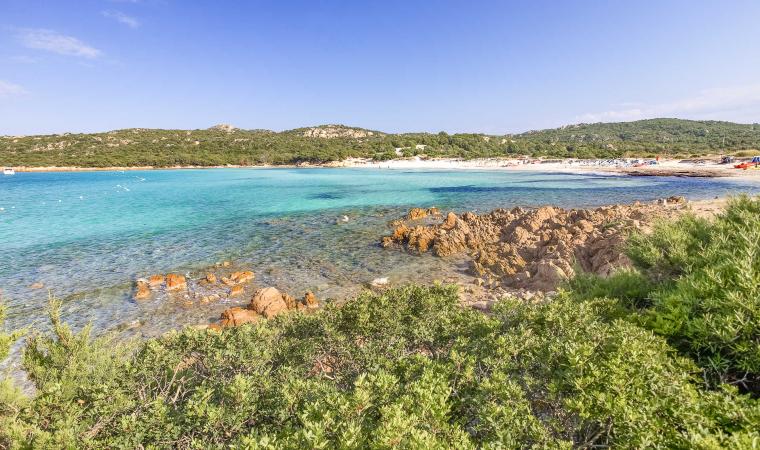As soon as your feet touch the sand, you’ll feel like you’re inside a picture postcard. Fine, soft, snow-white, glistening grains of sand, facing a sea reflecting shades of turquoise and emerald green, with reddish granite cliffs to the sides and a crown of fragrant Mediterranean greenery behind it. This is the enchanting setting of Rena Bianca, one of the iconic beaches along the northeastern coast of the Island, 17 kilometres from Olbia and a few steps from the seaside villages of San Pantaleo and Portisco. From the beach, you can admire a breathtaking view of the Gulf of Cugnana, embellished on your left by the islands of Soffi and Mortorio.
Its name refers to the white sand, the beach’s most obvious feature, but when you observe the water’s edge you will notice hints of pink, coming from little grains of quartzite. In Rena Bianca, as well as relaxing on the sand, you can explore the surrounding stretches of coast by canoe, jet ski or pedalo or you can ‘get closer’ to the world of windsurfing, thanks to the school located on the beach. The waters are shallow, with a sandy seabed, suitable for families with children, the area is accessible to disabled people and there is no shortage of refreshment areas and beach equipment rentals.
In Sardinia, the most popular beaches often hide a cosy, private corner, without services but with the possibility of being in closer contact with nature. Rena Bianca confirms this rule: from the car park and from the left side of the beach there are two paths that cross the northern promontory, taking you to a small, wild, sandy arch-shaped area named Lu Stagnu Longu, referring to a small pond behind it.
You can get to Rena Bianca from provincial road SP 94, turning off at the signposted exit heading east, which leads directly to the car park. Coming from Olbia, just over a kilometre before the beach, an inscription on a slab of rock embedded in the ground indicates the entrance to Portisco. Here, a village has developed around the Marina di Portisco, with villas, shops and hotels, while a white sandy beach stretches to the north, plunging into the sea with its light blue and darker blue waters. Near the cliff to the north you will notice a granitic islet, which bears the same name as the locality and is entirely covered in Mediterranean scrub.
Continuing further north, you will come to the ‘pearls’ of the Costa Smeralda, starting from Razza di Giunco, with its pink rocks embellishing a beach dotted with islets and promontories, beyond which lie Petra Ruja, featuring picturesque red rocks, and Liscia Ruja, the most spacious beach of the Costa Smeralda, where grains of pink quartzite once more peep out along the water’s edge.

